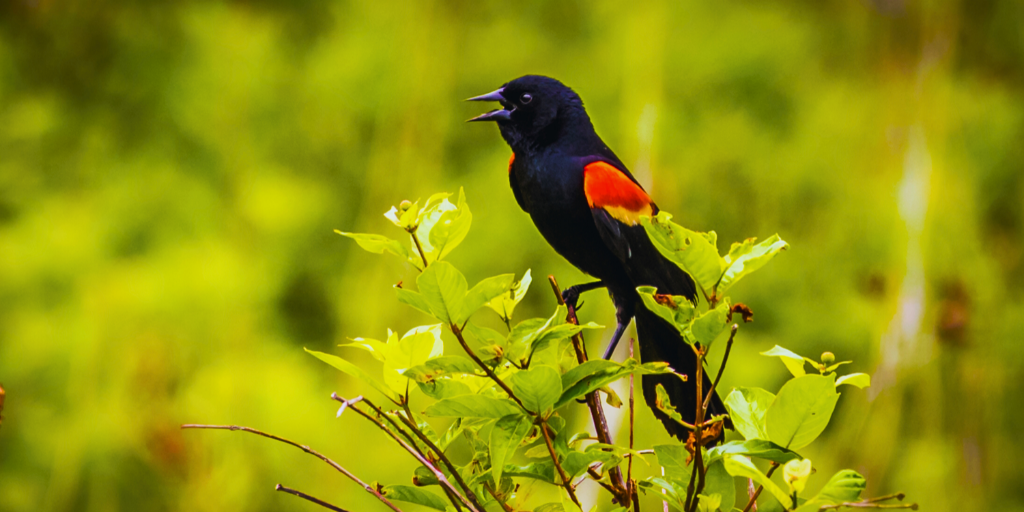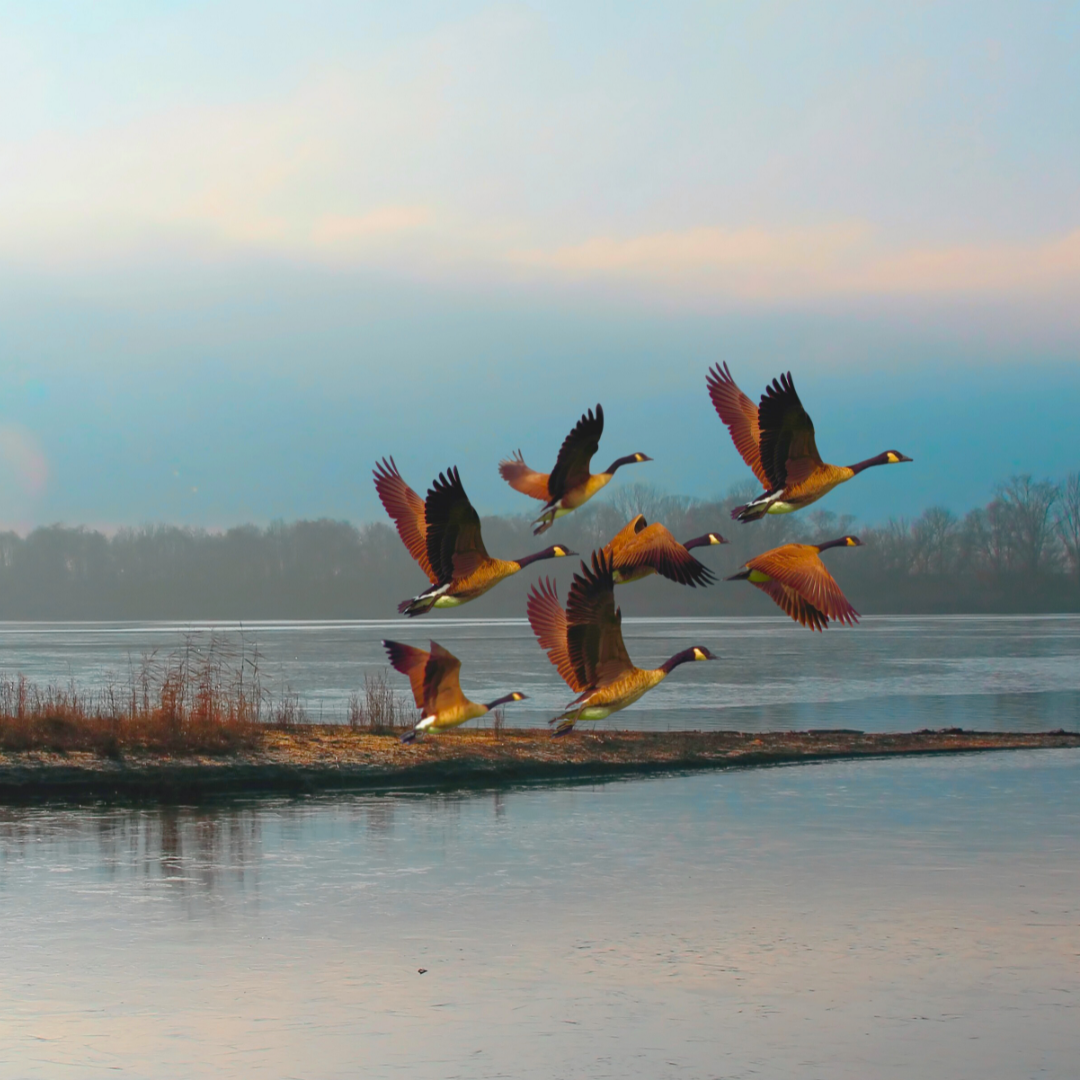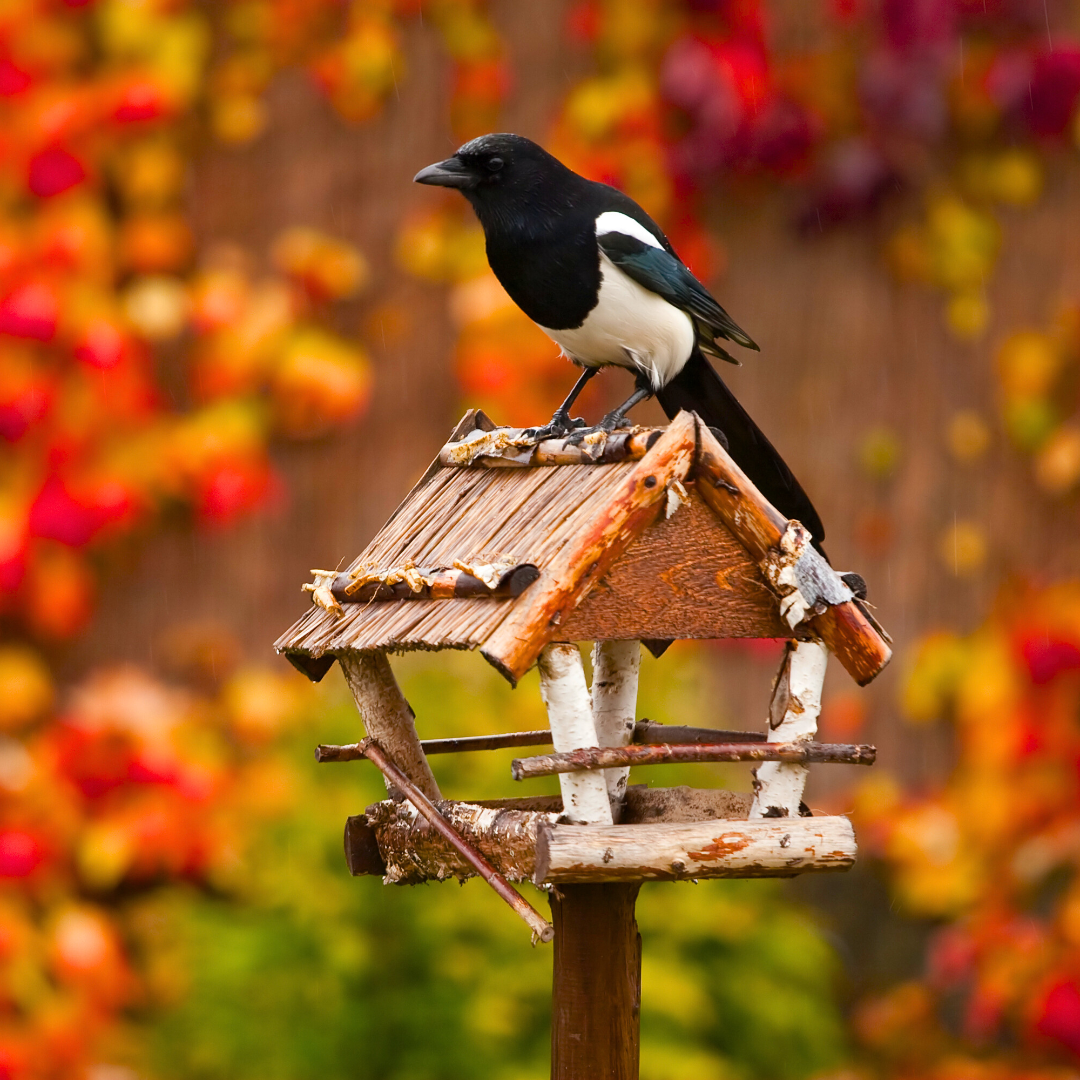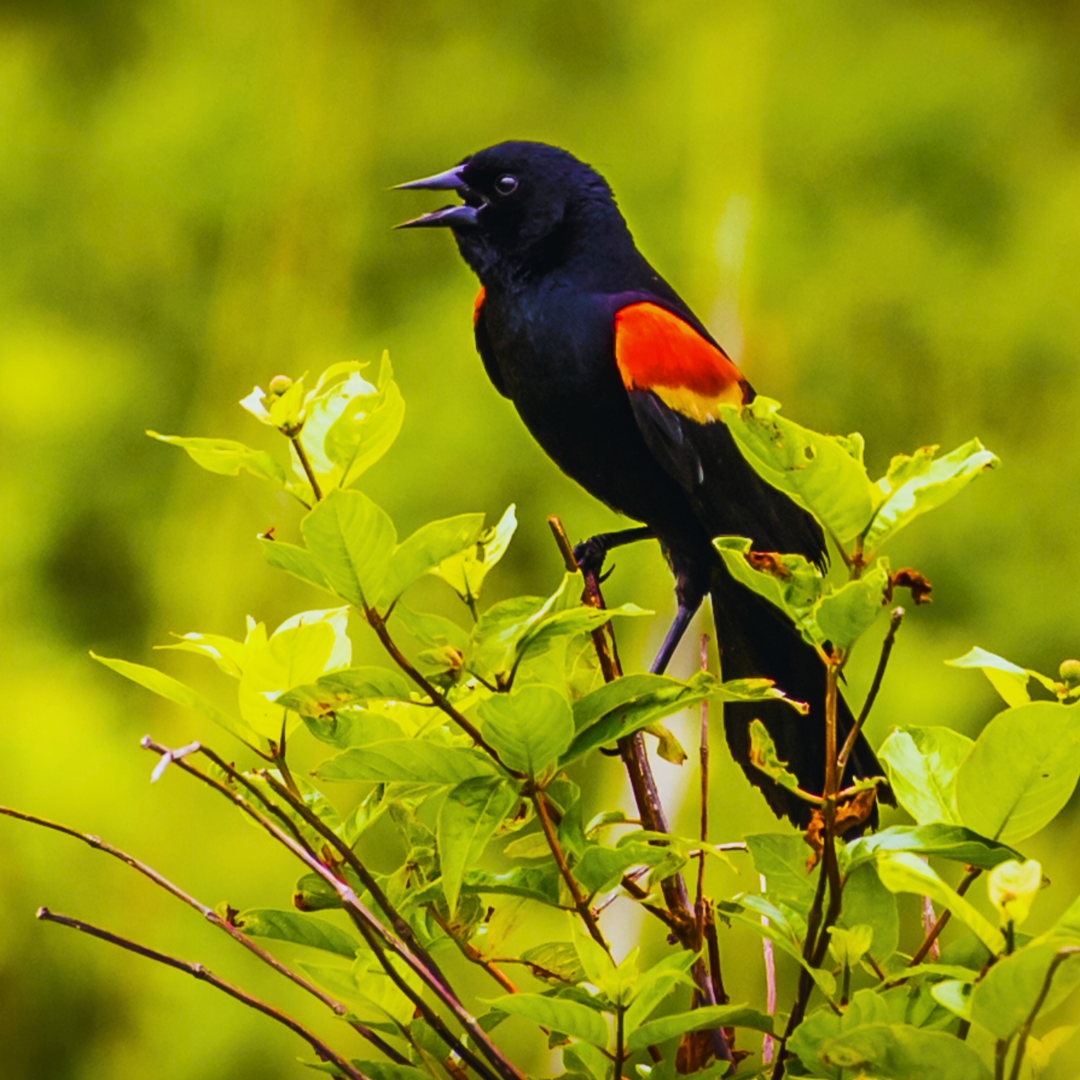
Jane Korvemaker explains how she's incorporating her children's interest in local birds with a study of the saints.
It was mid-May when my adolescent son and I started taking morning walks together. It was beautiful with the crisp morning air and complete lack of bugs to pester us (due to cold overnight temperatures). Both these things are no longer true as we’ve come into summer, but our persistence in dragging ourselves out of bed and walk bleary-eyed toward the paths by the ponds has found new fervour: bird watching.
We didn’t know heads from tails between birds when we started. We generally had three categories: birds that swam, birds that didn’t swim, and Canada geese. Now, we have our favourite types that have made their homes among the reeds: for him, the Red-Winged Blackbird; for me, the Eared Grebe.
Our adventures have included tactics for mosquito-avoidance, geese-avoidance, and attempting-to-camouflage-so-we-can-get-close-to-the-ducks, observing habitats and characteristics, and trying to save a nascent duckling (who sadly succumbed to its injuries).
Since all my kids have loved learning more about the birds in our area, I’ve started to wonder which saints are associated with birds. Though I’ve done some pre-work, I’m looking forward to the adventure of learning the stories of saints and birds over the summer with them.
.png?width=1080&height=1080&name=20230704%20JKorvemaker%202%20(1).png)
Here are two saints I found rather interesting: St. Milburga (or Milburgh) and St. Oda of Brabant.
St. Milburga of Wenlock (d. 727 AD) is the patroness of birds because she was said to have a curious power over them. Milburga was a royal daughter in a sub-kingdom in Anglo-Saxon England. She and her family were devout Catholics; the women in her immediate family became abbesses and are saints. Milburga followed in their footsteps.
According to legend, close to harvest one year, a large flock of geese landed in the farmers of Wenlock’s fields. The farmers could not deter the geese from consuming their corn, no matter what they did. Milburga began to pray and the geese took flight, leaving the fields. It is said that geese do not dare to land in Wenlock on her feast day, February 23. In artwork, she is often pictured with geese.

St. Oda (d. circa 680 AD) was from Scotland and was the blind and beautiful daughter of a king. She was sent by her parents on pilgrimage to Belgium in the hopes that she might be cured of her blindness.
After praying much of the night at the grave of St. Lambert, upon waking she could see sunlight for the first time. She was indeed cured of her blindness. In her gratitude for being healed, she offered her life to God in dedicated service. She returned to Scotland and found herself the centre of much attention, particularly with suitors for marriage. Though she had told her father she was not interested in marriage, he sought to have her wed. She, along with her maid, fled at night to escape the arranged marriage, eventually crossing the North Sea.
While searching for a place to remain, she and her maid were constantly pestered by magpies until they were eventually led by the magpies to a place in the forest. The villagers close by helped them build a hut and they remained there. When her father discovered where she was, he did not succeed in bringing her back to Scotland because whenever he would approach their hut, the magpies would attack and drove him off. Once Oda’s maid passed away, Oda retreated further into the woods. When she passed away, the people of the village, who had great respect for her, buried her in their town. That village is now called Sint Oedenrode, named after her.
Although she was from Scotland, St. Oda is more associated with the Netherlands.
Her feast day is October 23, though she is only celebrated regionally. She is patron of the visually impaired and often pictured with a magpie.

There are a number of other saints who have associations with birds; I hope to discover more with my children this summer!
Do your children have a particular love of an animal? Is there a saint associated with that animal?

Copyright 2023 Jane Korvemaker
Images: Canva
About the Author

Jane Korvemaker
Jane Korvemaker loves food, family, wine, and God (perhaps not in that order). She holds a Certificate in Culinary Arts, which pairs perfectly with her Bachelor in Theology. A former Coordinator of Youth Ministry, she writes from the beautiful and cold province of Saskatchewan, Canada. She works from home and takes care of her three very hard-working children. Jane regularly blogs at AJK2.ca.


.png?width=1806&height=731&name=CatholicMom_hcfm_logo1_pos_871c_2728c%20(002).png)
Comments